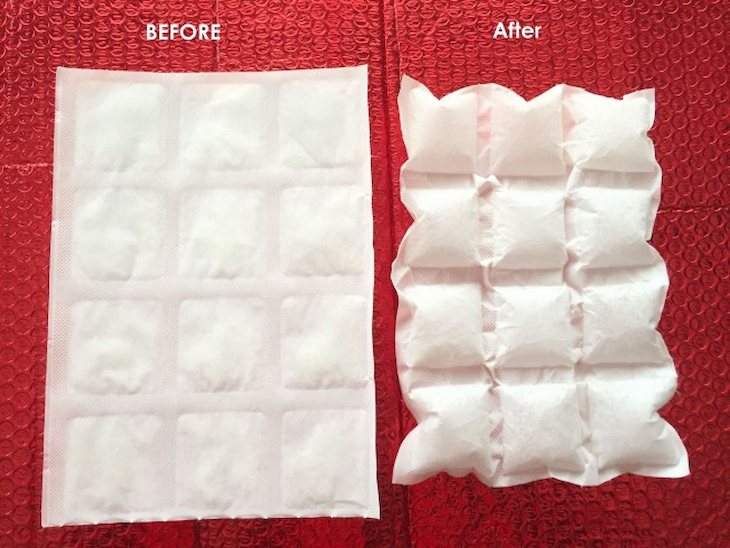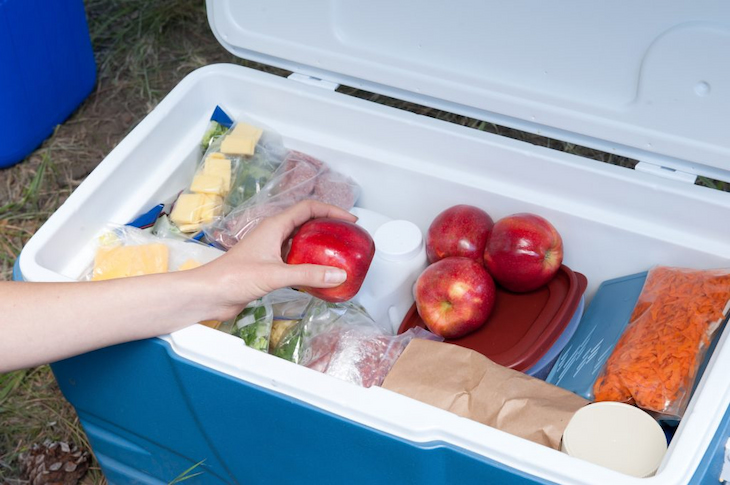13
Jul

Operating a business that sells perishables comes with different challenges. One of the most common is delivering food and the crucial task of preventing its spoilage during transit. For example, if your product arrives at its destination in poor condition, it will cost you customers and will in turn damage your reputation.
That said, it’s essential to implement certain techniques and follow several procedures to make sure the food arrives fresh, unspoiled, and free of contamination. Proper packaging and shipping practices help prevent the growth of bacteria, reduce the risk of foodborne illnesses, and ensure that consumers receive safe and high-quality products.
When dealing with food business, specifically shipping food, it’s important to choose the right freezing methods to ensure safe transportation and preservation of the items. Here are some recommended freezing methods and tips on how to choose the right one:
Using dry ice, which is not even ice but instead solid carbon dioxide, is a must when shipping frozen food. Companies offer both reusable and disposable dry ice packs for sale and most of them will ship them directly to your business. Solid carbon dioxide has a very low temperature of -78.5 degrees Celsius and doesn’t turn into liquid when it thaws. Instead, it sublimates or in other words turns into gas.

Since it leaves no water residue, you won’t need to worry about water damaging your package. Also, this type of freezing method helps maintain a consistently low temperature inside the shipping container, keeping the food frozen for a long period of time. If you’re shipping frozen food on a lengthier journey, consider finding a supplier where dry ice packs for sale are available. It’s ideal for meat and seafood as it keeps them frozen solid. However, this is a hazardous material so you must use protective equipment when handling it to avoid frostbite.
Another freezing method is implementing flash-freezing, a technique used to rapidly freeze food items at extremely low temperatures, preserving their quality, texture, and flavour. By freezing food quickly at temperatures below the freezing point of water, flash-freezing forms smaller ice crystals, which helps retain the nutritional value of the food and extend its shelf life. Whether utilized in commercial food processing or at home, this is an effective way to preserve the integrity and quality of frozen food items.
These packs are filled with water or a gel-like substance that can be frozen and placed alongside the food items in the packaging. Since they are water-based, they thaw a lot faster than dry ice and may damage the package if it isn’t waterproof. That is why it’s best to use them in cases when you’re shipping refrigerated items that don’t need to be frozen solid such as fresh produce, dairy, baked goods, and chocolate. Frozen gel packs are especially useful for short-distance shipping or when dry ice is not available or allowed.
When shipping frozen food, it is crucial to select the appropriate packaging materials. You need to acquire coolers or styrofoam boxes to maintain temperature control during transit. These containers help minimize heat transfer and keep the cold air trapped inside, maintaining a stable temperature for the frozen food.

Additionally, package the food in watertight plastic bags to prevent leaks. You can also wrap the watertight plastic bags with bubble wrap packing peanuts for additional protection. Moreover, opt for vacuum-sealed pouches which are ideal for packaging individual food items as they keep them separate and well-preserved during shipping. They remove air from the package, reducing the risk of moisture loss and maintaining the quality of the food during transport.
The packing process for shipping frozen food typically includes several important steps. For instance, make sure the food is thoroughly chilled before packing. When you place the frozen food in the insulated container, leave minimal empty space and add additional insulation material to fill the gaps. Remember to seal the container securely with adhesive tape and also label the package as “Perishable” and “Keep Frozen”. Don’t forget to include sender and recipient information on the package and attach a shipping label with clear instructions for handling frozen items as well.
Before you send the products, you need to do some research and select a reliable shipping carrier. By doing this, you’ll know that your package is properly taken care of and will reach the right destination in time. Consider expedited shipping options for longer distances and in cases when you are transporting temperature-sensitive items. Selecting the proper service will help you minimize risks and give you a piece of mind knowing your goods are in capable hands.
Monitoring weather conditions is crucial when shipping perishable items like frozen food. By staying informed about the weather, you can anticipate and respond to potential risks that may affect the quality of the food during transit. Extreme temperatures, such as heat waves or freezing cold, can lead to spoilage or thawing, compromising the freshness of the food. Monitoring the weather can help you in taking proactive measures to prevent these risks, such as using additional insulation or cooling methods. Additionally, being aware of severe weather events or storms allows you to adjust shipping schedules, reroute shipments if necessary, and ensure timely delivery.

Each country has its own import/export regulations regarding the transportation of frozen food. It is essential to check the specific requirements and restrictions of the destination country before sending frozen food from Australia. Especially when shipping food preserved with dry ice packs there are certain regulations you need to follow. For example, the package needs to be labelled, and the weight of the dry ice has to be written in kilograms on the box as well as the shipping information of the sender and the receiver of the goods. For overseas transportation, some shipments may require permits, licenses, and health certificates. Double-check the needed documents before starting the whole procedure.
Shipping frozen food is not an easy process. It requires patience, knowledge and following all of the above-mentioned methods and practices. A lot can go wrong when transporting perishables. That being said, you need to be prepared for the worst-case scenarios, choose the ideal package materials, and decide on the proper freezing methods that will suit your products. By following all of these tips, you can guarantee prompt delivery of well-preserved goods which will result in overall increased customer satisfaction.